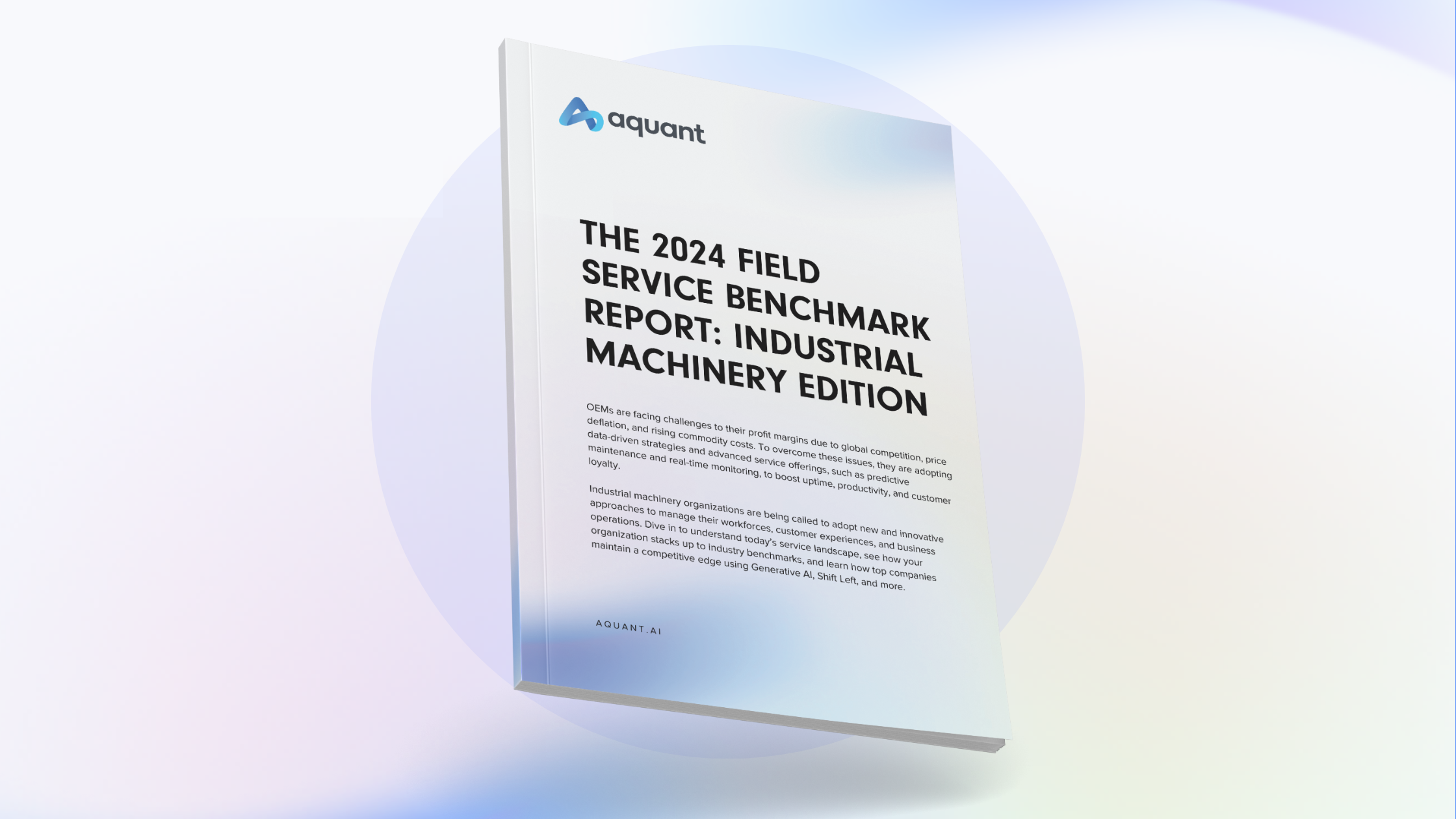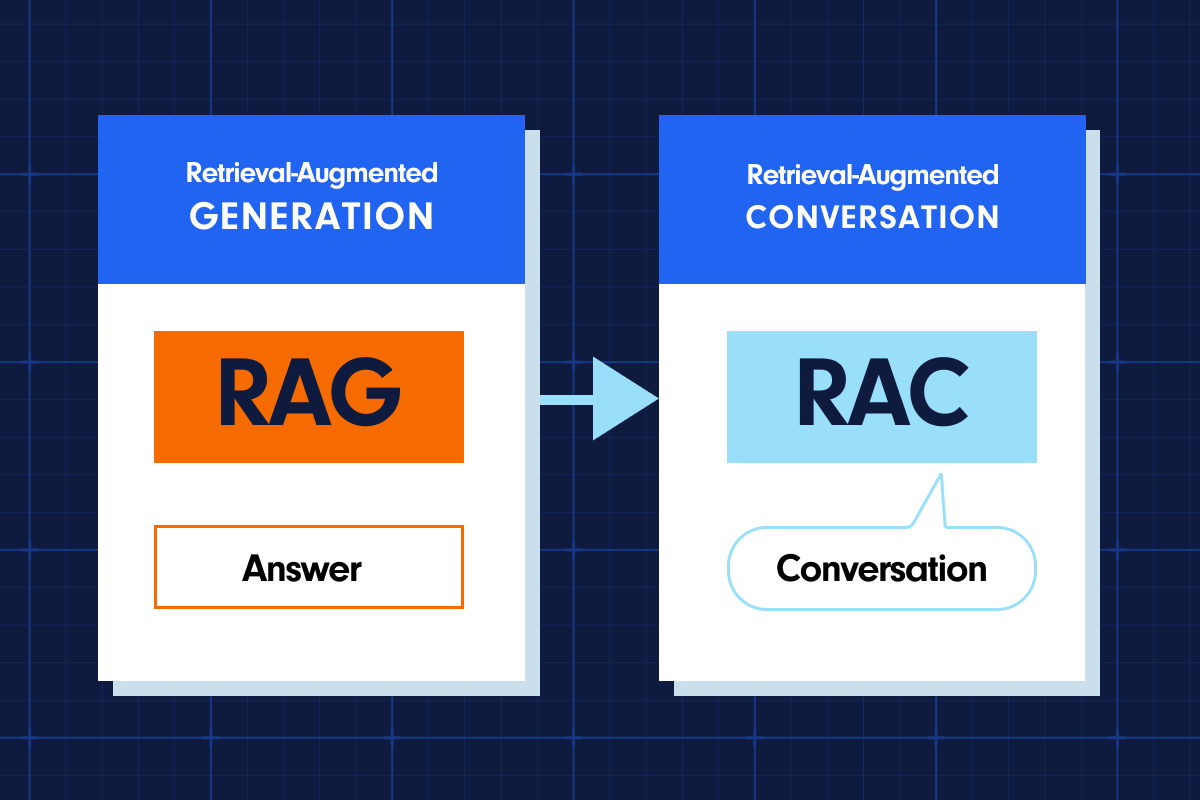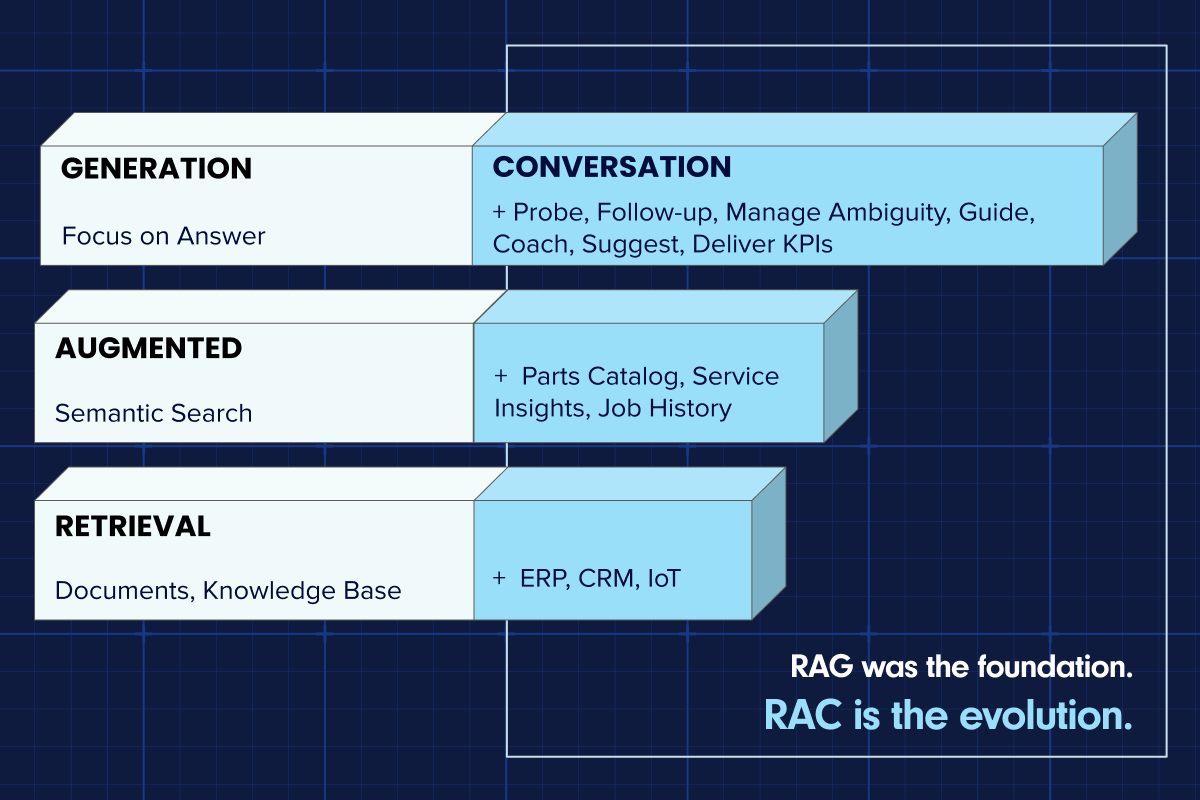According to Aquant’s 2024 Field Service Benchmark Report: Industrial Machinery Edition, OEMs are facing challenges to their profit margins due to global competition, rising costs, knowledge gaps, and scattered and incomplete data. To overcome these issues, they are adopting data-driven strategies and advanced service offerings, such as predictive maintenance and real-time monitoring, to boost uptime, productivity, and customer loyalty.
2024 will be a critical year for OEMs, as integrating Generative AI has become crucial for OEMs to stay competitive. This technology reduces costs, improves service quality, and transforms supply chain management through automation and advanced decision-making processes. Generative AI predicts equipment failures, schedules maintenance, tailors operations to client needs, and enhances workforce capabilities and supply chain foresight.
Analysis
This year, we analyzed findings from:
- 40 organizations
- More than 5 million work orders spanning nearly 1.3 million assets
- Over 73,000 technicians
- Almost $2.5 billion in service costs
- An average of 3.2 years of service data per company
Note: Data from OEMs with and without dealer networks are included within this set.
 Using technology, we can take somebody new to service and make them perform like they have 30 years of experience. AI assistance guides less-experienced people to perform similarly to their higher-skilled counterparts. Everyone, including customers, can independently troubleshoot issues, which helps with uptime. If they can handle the problem themselves using AI assistance, it helps them fix it quickly without the need to call a technician, especially if the required part is nearby or not needed for the repair.
Using technology, we can take somebody new to service and make them perform like they have 30 years of experience. AI assistance guides less-experienced people to perform similarly to their higher-skilled counterparts. Everyone, including customers, can independently troubleshoot issues, which helps with uptime. If they can handle the problem themselves using AI assistance, it helps them fix it quickly without the need to call a technician, especially if the required part is nearby or not needed for the repair.
– Josh Orr, Product Support Services Manager, John Deere [Listen Now]
Key Findings
In our analysis of trends across industrial machinery companies, we learned:
KPIs:
- On average, some KPIs, like First Time Fix Rates, are generally stable across various industries. However, the performance differences between heroes and challengers remain significant in bottom-performing organizations—for example, their First Time Fix Rate is just 56% compared to 86% for the top-performing organizations.
- Diagnostic time continues to impact industrial machinery service organizations, primarily due to complex documentation and multiple revisions within manuals. As a result, many organizations need help locating asset information readily.
- The median Resolution Time is almost two weeks in bottom-performing organizations, but it is about three days in top-performing organizations.
- Top-performing manufacturers provide tools and training to dealers so that dealers can spend less time diagnosing the issues. This frees up dealer capacity, allowing them to spend more time fixing the problems that come through their doors.
- The skills gap also presents a challenge.
- In top industrial machinery companies, bottom performers cost 20% more than the highest. However, the lowest-performing organizations have the most expensive workforce gap, with their bottom performers costing 128% more than the top-performing employees.
- If everyone at industrial machinery companies had the knowledge and skills to perform like the top 20% of the workforce, service costs would be reduced by as much as 28%.
Data:
There is a significant opportunity for organizations to gain more visibility into their performance and spot areas of opportunity.
- Industrial machinery companies typically have disorganized and imperfect customer data. It’s generally scattered across multiple ERPs, CRM systems, and locations. The data source can also cause issues—for example, warranty data provided by dealers often lacks visibility into the entire service history of problems, making it challenging to get insights that improve performance.
- Additionally, multiple stakeholders are involved in handling the assets throughout their lifecycle. For example, repair centers offer repair services, warehouses dispatch spares, and field technicians examine and attend to the product. Customers reach out to contact centers belonging to different product value chain entities.
- For these reasons and more, OEMs are typically unable to optimize post-sales services and value due to the effort required to consolidate, clean up, and enhance customer and product data. For service delivery plans to succeed and scale, teams must be able to utilize quality data across the entire organization.
Customer Experience Gap
- Companies that measure First Time Fix Rates in 7-day or 14-day windows are setting the stage for a significant gap, which can lead to frustrating customer experiences. It becomes easy to overestimate First Time Fix Rates and underestimate Resolution Costs.
- We recommend:
- Measuring First Time Fix Rates in periods of 30 days.
- Prioritizing upskilling & making every service team member equally knowledgeable about equipment and best practices.
How are best-in-class industrial machinery companies getting ahead and staying ahead?
- Take a deeper look at existing data. Industrial machinery organizations should examine their data more thoroughly. By analyzing data from all aspects of their operations, including customer interactions, equipment performance, and field service activities, companies can identify patterns and trends that will help them make more informed business decisions. They can also utilize AI data collection and processing tools, which allows for accurate and up-to-date information on equipment performance and service needs. By using these tools, teams can better prioritize tasks and address potential issues before they become more significant problems.
- Emphasize training and building technical expertise as technology advances. The effectiveness of these technologies hinges on personnel’s ability to communicate, problem-solve, and adapt to rapid changes. This trend recognizes the dual need for advanced technical training and the cultivation of soft skills such as leadership, communication, and empathy.
- Embrace the connectivity and serviceability trends, especially since equipment complexity is rising.
- Implement AI tools built for servicing complex machinery. These tools will offer insights and problem-solving based on a granular understanding of your business.
Inspired by the report insights?
Sign up for Aquant’s 7-Day Challenge today! We’ll analyze your data to provide the essential insights, tools, and strategies to transform your industrial machinery service organization and surpass your business objectives.








